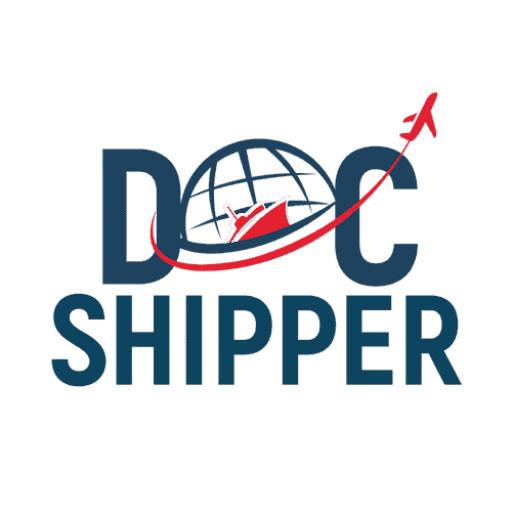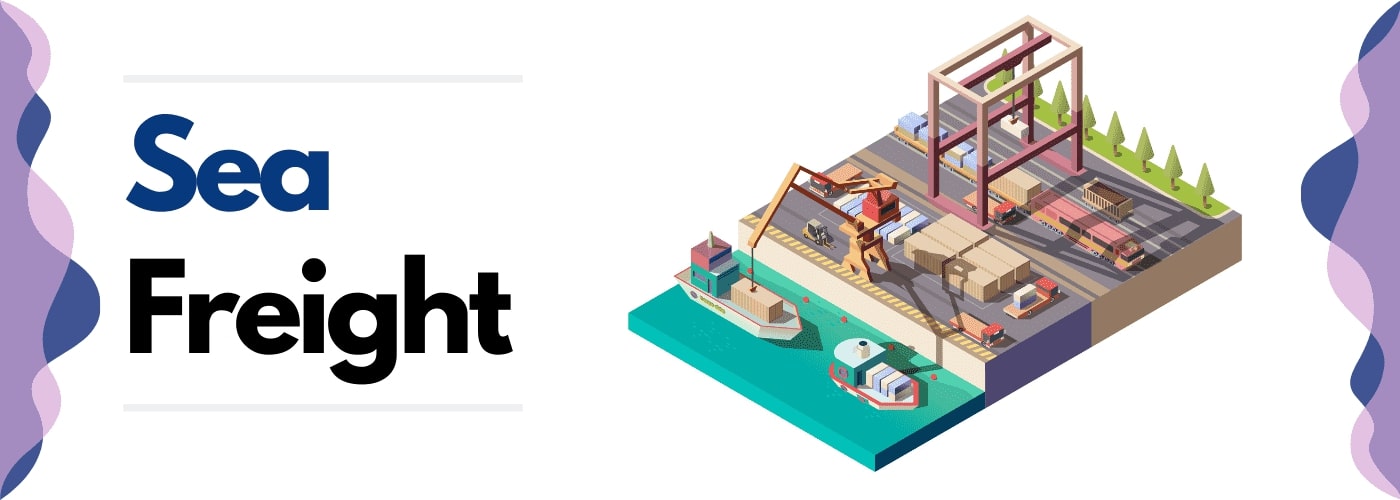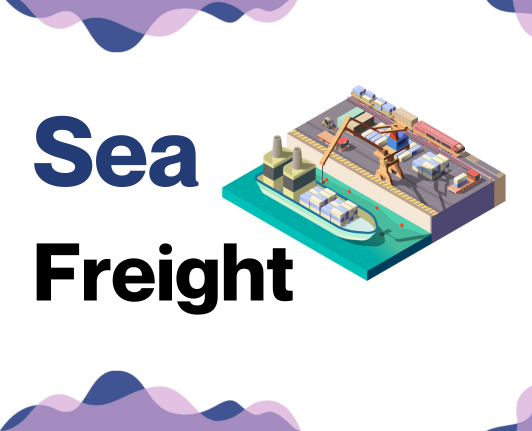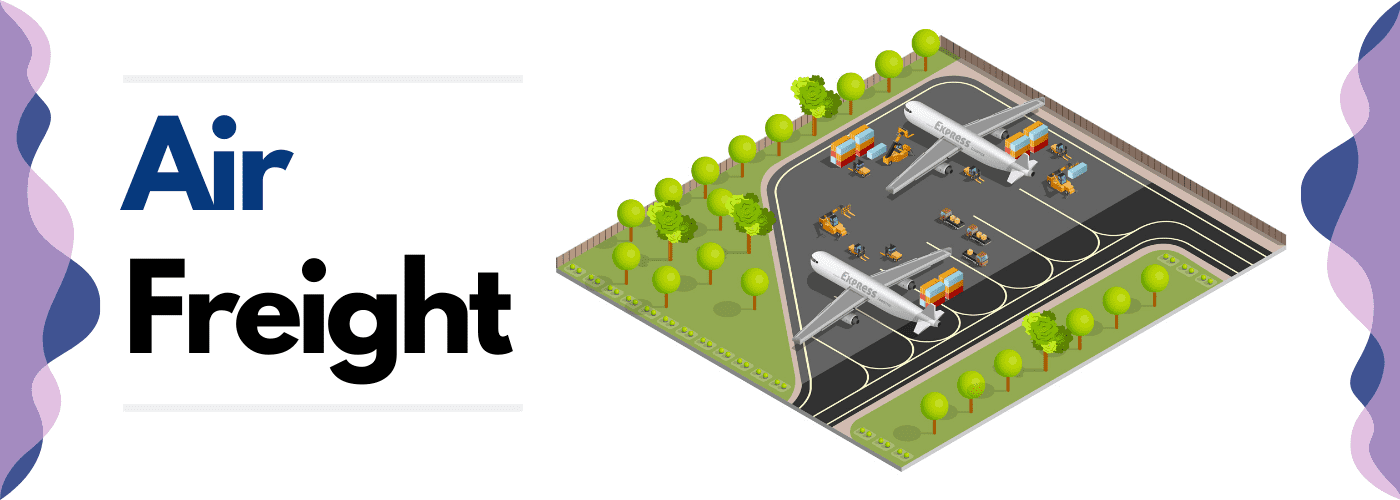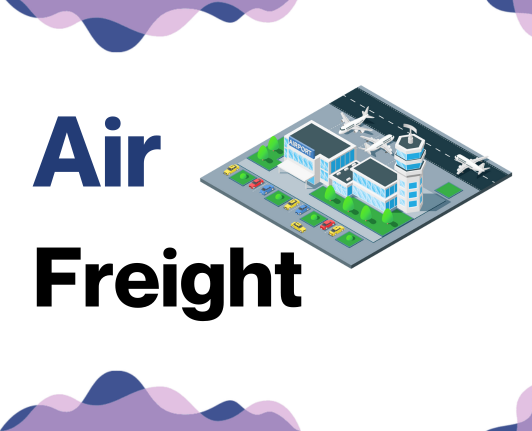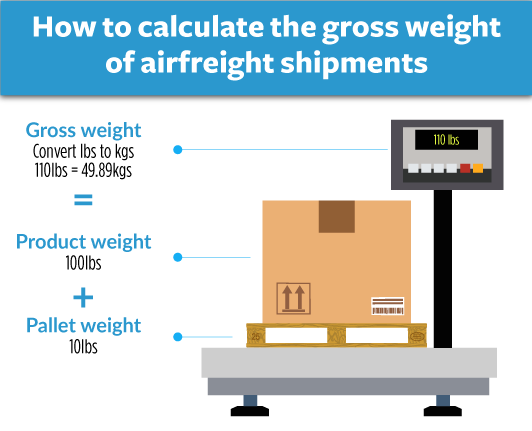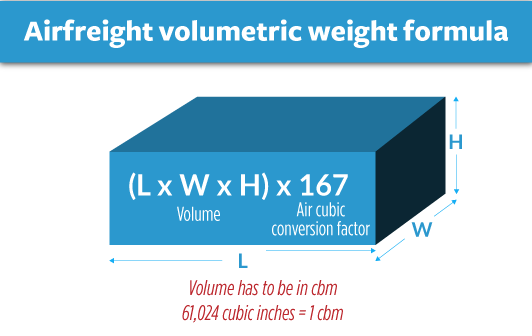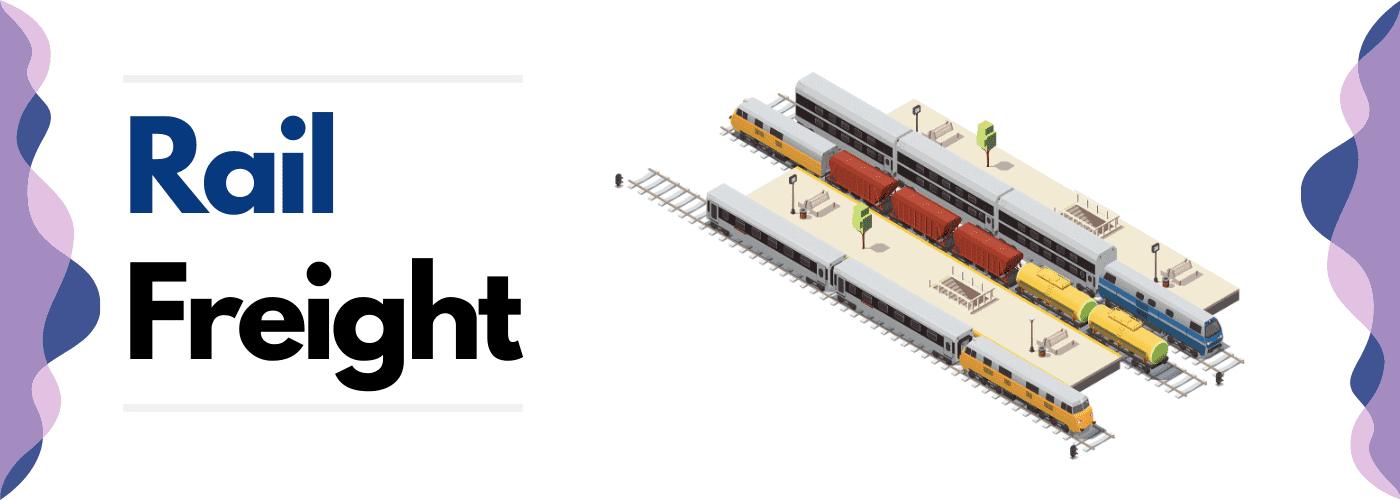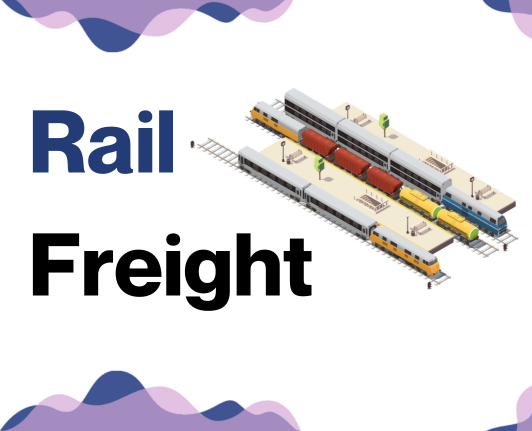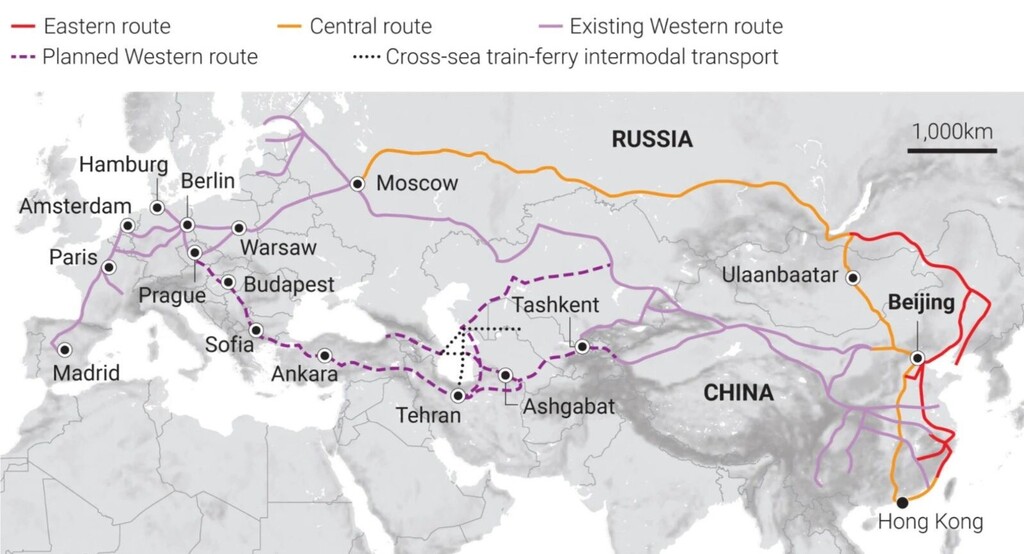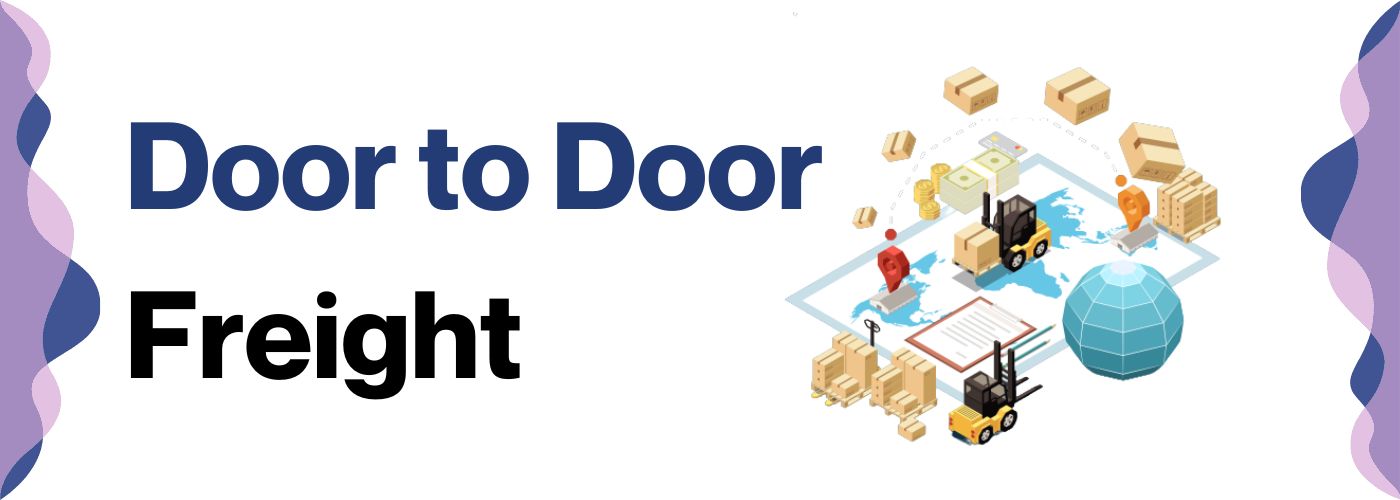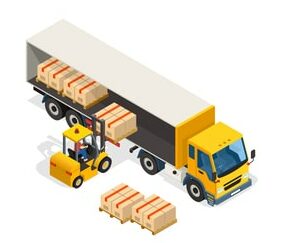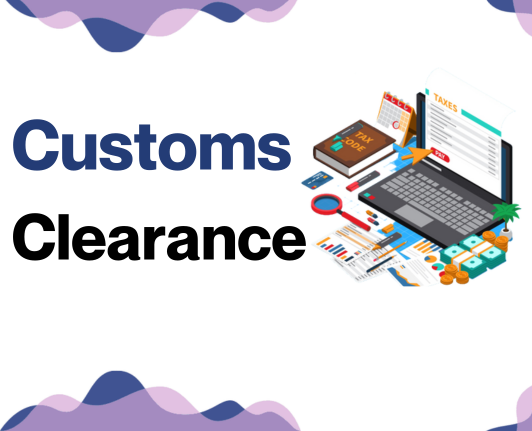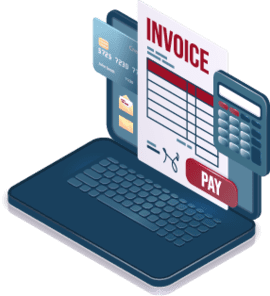Are your shipments to Croatia moving slower than a panda munching on bamboo? Wrapping your head around complex freight rates, puzzling transit times, and intricate customs regulations can feel like a vast maze with no end. This guide is your cheat-sheet for successfully transporting goods from China to Croatia.
We delve into different types of freight options, unravel the knot of customs clearance, and offer a comprehensive explanation of the duties and taxes that apply. More than just facts, we provide practical, business-centric advice for thriving in the international shipping scene. If the process still feels overwhelming, let DocShipper handle it for you! As an international freight forwarder, we transform these logistical challenges into success stories for businesses every single day.
Which are the different modes of transportation between China and Croatia?
Choosing the best transport method between China and Croatia isn't quite like picking between chocolates in a box. Think of it like a complex chess game where every move counts. Geographical quirks matter - the large distance and lack of shared borders can cross out road or rail transport. So, the real question is air or sea? It's a comparison of speed versus cost, urgency versus volume. Let's help you make the right strategy, matching your shipping needs to the logistics realities of these two nations.
How can DocShipper help?
Need help shipping goods from China to Croatia? DocShipper can handle it all! From organizing transport to customs clearance, our experts simplify the complex process for you. Your cargo, our responsibility. Don't stress, just reach out! Contact us for a free estimate within 24 hours or call our consultants for free advice. Your global trade, made easy with DocShipper.
DocShipper Tip: Sea freight might be the best solution for you if:
- You are shipping large volumes or bulky items, as sea freight offers the most space at a cost-effective rate.
- Your cargo doesn't have an urgent deadline, as sea freight typically has longer transit times compared to air or rail.
- Your shipping routes are between major ports, allowing you to leverage the extensive global network of sea shipping lanes.
Sea freight between China and Croatia
Embarking on the sea route between the robust manufacturing terrain of China and the rich, diverse markets of Croatia? You're in for quite the adventure. Major ports like Shanghai in China and Rijeka in Croatia serve as vital anchors to these countries' bustling business hubs, enabling a smooth flow of a countless range of products, from electronics to textiles.
Choosing sea freight for moving large volume goods makes economic sense, even if it might take a little longer than air transport. But beware, it’s not always smooth sailing. Many a shipper has found themselves tangled in a web of complex procedures and unforeseen challenges. Dodging these stumbling blocks, like a seasoned sea-veteran, is easier if you know the ropes. Don't fret, we've mapped out the route for you, charting the course with best practices and crucial specifications, simplifying the often-daunting journey using proven strategies. As we plunge into the specifics, you'll become the seasoned mariner effortlessly navigating these high seas of shipping.
Main shipping ports in China
Port of Shanghai
Location and Volume: Located at the mouth of the Yangtze River, this strategically central location makes it the world's busiest port with a shipping volume of 43.19 million TEUs (Twenty-Foot Equivalent Units) in 2022.
Key Trading Partners and Strategic Importance: Key trading partners include the United States, Europe, and Japan. The Port of Shanghai serves as a critical gateway to the East China Sea and the Pacific Ocean.
Context for Businesses: If you're looking to expand your reach in Asian markets, especially mainland China, consider the Port of Shanghai due to its heavy traffic and its connections with many global transportation routes.
Port of Ningbo-Zhoushan
Location and Volume: Located in the Zhejiang province, this port is known for its substantial shipping volume, clocking 33.35 million TEUs in 2022.
Key Trading Partners and Strategic Importance: Its main trading partners include the United States, Australia, and Russia. The port excels in the transportation of iron ore and crude oil.
Context for Businesses: If your business deals with large quantities of raw materials, especially iron ore or crude oil, the Port of Ningbo-Zhoushan could be crucial due to its unparalleled handling of these materials.
Port of Shenzhen
Location and Volume: This port spans 260 kilometers along the coast, offering an impressive shipping volume of 25.77 million TEUs in 2019.
Key Trading Partners and Strategic Importance: It has trade relations with more than 300 ports spread across 100 countries. This port particularly dominates in container and cargo shipping.
Context for Businesses: If your shipping strategy encompasses a broad range of global markets, the Port of Shenzhen is a noteworthy choice due to its extensive worldwide connections.
Port of Guangzhou
Location and Volume: Located in Guangdong province, this port boasts a total shipping volume of 21.87 million TEUs in 2019.
Key Trading Partners and Strategic Importance: It has strong trade relations with over 300 ports in more than 80 countries and regions. This port is heavily dominant in automotive logistics and agriculture.
Context for Businesses: If your business is involved in the automobile industry or agriculture, the Port of Guangzhou should be on your radar due to its specialization in these sectors.
Port of Qingdao
Location and Volume: Situated in the Yellow Sea, Port of Qingdao sees a shipping volume of 18.26 million TEUs annually as of 2019.
Key Trading Partners and Strategic Importance: It has trade connections with over 180 international ports in more than 50 countries. The port is particularly dominant in metal ores and grain transport.
Context for Businesses: If your company is in the business of metal ores, grains, or related products, the Port of Qingdao is worth considering due to its command in shipping these particular goods.
Port of Tianjin
Location and Volume: Conveniently located as the gateway to Beijing, this port exceeded a shipping volume of 21 million TEUs in 2022.
Key Trading Partners and Strategic Importance: Its strategic geographical location makes it the primary maritime gateway to Beijing, making it an essential port for Northern China.
Context for Businesses: If you're planning to penetrate markets in Northern China or surrounding regions, then the Port of Tianjin, with its proximity to Beijing, could be the key to your business expansion strategy.
Main shipping ports in Croatia
Port of Rijeka
Location and Volume: Situated in the Bay of Kvarner along the North Adriatic Sea, the Port of Rijeka is Croatia's primary seaport, with a shipping volume of over 260,000 TEU.
Key Trading Partners and Strategic Importance: Its key trading partners primarily include Italy, Germany, Austria, and Hungary. The port has a strategic importance because it serves as a central European gateway hub.
Context for Businesses: If you're aiming to tap the European market, specifically countries such as Italy, Austria, or Hungary, the Port of Rijeka could prove pivotal in your logistics due to its efficient turnover time and direct links to central European countries.
Port of Ploče
Location and Volume: The Port of Ploče, positioned on Croatia's southern Dalmatian Coast, holds an annual shipping volume close to 7 million tons.
Key Trading Partners and Strategic Importance: The port maintains robust trade relations with Bosnia and Herzegovina, due in part to its geographic proximity to these regions. Strategically, it's important as it's a significant outlet for Bosnian exports.
Context for Businesses: If your company is planning to delve into the Balkan Peninsula markets, especially Bosnia, Port of Ploče is likely to be an integral part of your supply chain given its geographical suitability and connections.
Port of Zadar
Location and Volume: Nuzzled in the Zadar County on the Adriatic Sea, Port of Zadar is largely a passenger port but also handles yearly cargo volume of 3.9 million tons.
Key Trading Partners and Strategic Importance: Its key trading partners are largely European countries. It stands strategically vital due to the development of Zadar's new Gaženica Port, with a focus on both passenger and cargo traffic.
Context for Businesses: If your business deals in mixed freight traffic with a European focus, Zadar, with its extensive cruise and commercial facilities, could be highly beneficial for your logistics.
Port of Split
Location and Volume: The port of Split, nestled on the eastern shores of the Adriatic Sea, is primarily a passenger port but also manages an annual cargo volume of 1.8 million tons.
Key Trading Partners and Strategic Importance: The majority of its trading partners are also European countries. The port is highly important for local industries that depend on its logistics for import/export.
Context for Businesses: If your enterprise requires mixed goods transport, targeting Europe and specifically the Balkan region, the port of Split might be critically significant to your logistics.
Port of Dubrovnik
Location and Volume: Situated at the southern tip of Croatia, the Port of Dubrovnik primarily handles cruise ships but also manages goods transport with lesser volume.
Key Trading Partners and Strategic Importance: The port engages in trade primarily with European countries, particularly Mediterranean ones. It holds strategic importance for its dominant and growing cruise sector.
Context for Businesses: If your business involves tourism along with limited freight transport, the port of Dubrovnik could be crucial for seamless operations, given its excellent passenger facilities and freight handling capacity.
Port of Šibenik
Location and Volume: Found near the mouth of the Krka River on the Adriatic Sea, the Port of Sibenik handles a shipping volume close to 1.8 million tons yearly.
Key Trading Partners and Strategic Importance: Engaging predominantly with other European countries in trade, this port is of strategic importance due to its accessibility from the open sea and its ability to accommodate larger vessels.
Context for Businesses: If your freight transport activities need larger vessel handling facilities and easy accessibility from the open sea, Port of Šibenik could make an essential part of your logistic process.
Should I choose FCL or LCL when shipping between China and Croatia?
Deciding between Full Container Load (FCL) and Less than Container Load (LCL), or consolidation, when shipping between China and Croatia is an essential business decision. It influences your costs, delivery times, and ultimately, the success of your freight transportation. In this section, we delve into the key differences, highlighting the varying factors such as volume and urgency, to help your business make a well-informed choice best fitting your specific shipping needs. Get ready to unravel the intricacies of sea freight options, perfectly balancing costs and efficiency for a prosperous voyage!
LCL: Less than Container Load
Definition: Less than Container Load (LCL) shipping involves consolidating multiple shipments from different shippers into a single container. It's a cost-effective way of transporting small volumes of goods without needing to hire a full container.
When to Use: LCL shipment is optimal when your cargo is less than around 13, 14, or 15 cubic meters (CBM), as it offers a flexible and efficient solution for smaller loads that would not fill an entire container.
Example: Let's take GreenTech, a Croatian tech start-up that needs to import a small batch of unique components from China. The volume is only 10 CBM - too small for a full container. To minimize shipping costs, GreenTech opts for an LCL shipping quote. Their components are packed with other shippers' goods in the same container, promoting cost-efficiency and flexibility.
Cost Implications: The main financial advantage of LCL freight is that you only pay for the space your cargo occupies in the container, rather than having to rent a whole container yourself. However, there may be additional handling fees for the consolidation and deconsolidation process involved in LCL freight, which should be factored into the overall shipping cost analysis.
FCL: Full Container Load
Definition: FCL, or Full Container Load, is a type of fcl shipping where a single container is used exclusively by one shipper. It offers a high degree of safety as the fcl container is sealed at the origin and only opened at the destination.
When to Use: FCL is the ideal choice when your cargo volume exceeds 13 to 15 CBM. The sheer volume makes it cheaper and warrants exclusive use of a 20'ft or 40'ft container. It also reduces the risk of damage since your goods aren’t mixed with others.
Example: Take for instance, 'Company A' producing plastic goods. They have a bulk export order going from China to Croatia. Their shipment occupies more than 15 CBM, making FCL the more cost-effective and secure option.
Cost Implications: Freight rates for FCL can seem higher at first glance, but on per unit basis, it's economical for large volume shipment. An FCL shipping quote can save you considerably when compared with LCL or other shipping modes. Remember, the cost can vary depending on container size, type of goods, and route chosen.
Unlock hassle-free shipping
Discover the hassle-free way to handle your cargo shipping with DocShipper! Our ocean freight experts aid in deciding if shipping by consolidation or full container fits your needs based on volume, type of goods, budget, and time constraints. We simplify complex processes and ensure your cargo reaches Croatia from China, worry-free. Ready to explore stress-free shipping? Click here for your free estimation!
How long does sea freight take between China and Croatia?
Transporting goods using sea freight between China and Croatia typically requires between 35-60 days. This transit time can depend on various factors including the specific ports used, the weight and nature of the goods being shipped. For a more precise estimate tailored to your specific shipment, it's recommended to contact a freight forwarder such as DocShipper.
Review the table below for average transit times between major ports in both countries:
| China Port | Croatia Port | Average Transit Time (Days) |
| Port of Shanghai | Rijeka | 37 |
| Port of Ningbo | Ploče | 39 |
| Port of Shenzhen | Zadar | 29 |
| Port of Guangzhou | Split | 36 |
*Remember, these are average estimates – specific journey times will vary based on numerous factors. Getting a personalized quotation is the most effective way to plan your shipment.
How much does it cost to ship a container between China and Croatia?
Ocean freight rates for shipping a container between China and Croatia can significantly fluctuate, typically ranging widely in price per CBM. These costs are influenced by factors such as your Point of Loading, Point of Destination, the carrier, your goods' nature, and even monthly market fluctuations. Hence, pinpointing a standard shipping cost is challenging. However, don't fret! Our shipping specialists are at your service, working diligently to provide the best feasible rates tailored specifically to your needs. Keep in mind, we quote on a case-by-case basis, assuring optimal solutions for your shipping requirements. Count on us to pave your path in the world of freight forwarding!
Special transportation services
Out of Gauge (OOG) Container
Definition: OOG Containers are specially designed to accommodate and protect Out of Gauge cargo - that is, cargo that exceeds the standard dimensions of regular shipping containers. This unique element can provide the best solution for transporting oversized or irregularly shaped goods.
Suitable for: OOG Containers are typically used for bulky manufacturing equipment, large industrial materials or for construction machinery that can't fit into a standard container.
Examples: Examples of goods that might be shipped in an OOG container could include wind turbines, yachts, or large art sculptures.
Why it might be the best choice for you: If your goods are too large for standard containers, OOG shipping offers a safe and efficient solution tailored to your oversized cargo.
Break Bulk
Definition: Break bulk involves transporting loose cargo load that is too big or awkwardly shaped to fit into containers, requiring individual loading.
Suitable for: This method is best for items like timber, steel or pipes that need heavy lifting and rigging onto the vessel.
Examples: Items such as large construction equipment, locomotives, and boats would be appropriate to ship as break bulk.
Why it might be the best choice for you: If your cargo is extremely large, heavy, or both, break bulk shipping provides versatility and ease of loading and unloading directly to and from the ship.
Dry Bulk
Definition: Dry bulk shipping involves transporting unpackaged goods, typically in large quantities and free-flowing form.
Suitable for: Dry bulk is most suitable for goods such as grains, coal, ores.
Examples: Industries involved in construction, agriculture, and energy would use dry bulk shipping for sand, wheat, or coal respectively.
Why it might be the best choice for you: If you handle non-packaged commodities in large quantities, then dry bulk shipping might be the most efficient and cost-effective option.
Roll-on/Roll-off (Ro-Ro)
Definition: The Roll-on/Roll-off (Ro-Ro) method involves vehicles or machinery being driven directly on and off the ro-ro vessel, which is specifically designed for this purpose.
Suitable for: Roll-on/Roll-off is ideal for moving wheeled vehicles such as cars, trucks, tractors, or trailers.
Examples: An automobile manufacturer could use Ro-Ro to ship cars from China to Croatia.
Why it might be the best choice for you: If your freight involves large, driveable vehicles, then using a Ro-Ro is fast, efficient and minimizes potential freight damage.
Reefer Containers
Definition: Reefer Containers are temperature-controlled containers used for transporting goods requiring specific temperature settings.
Suitable for: Goods that require a certain climate during transportation, such as fruits, vegetables, meat, dairy products, or pharmaceuticals.
Examples: A Croatian food importer could use reefer containers to transport Chinese seafood or exotic fruits.
Why it might be the best choice for you: If your products are temperature-sensitive, reefer containers are crucial to maintain product quality and freshness during transport.
When it comes to the specifics of shipping between China and Croatia, seeking expert advice can be invaluable. At DocShipper, we understand your unique shipping needs and offer personalized, efficient solutions. Contact us to receive a free shipping quote in less than 24 hours.
DocShipper Tip: Air freight might be the best solution for you if:
- You are in a hurry or have a strict deadline requirement, as air freight offers the fastest transit times.
- Your cargo is less than 2 CBM (Cubic Meter), making it more suitable for smaller shipments.
- Your shipment needs to reach a destination that is not easily accessible by sea or rail, allowing you to tap into the extensive network of global airports.
Air freight between China and Croatia
Air freight between China and Croatia fuels businesses through a combination of speed and reliability. If you're dealing in small-volume, high-value items—think electronics or designer fashion—air freight smartly blends time and cost effectiveness that's hard to match. Imagine this - it's like hitting the sweet spot in a game of darts; finding that ideal balance.
Despite the advantages, a fair share of shippers stumble due to various oversight. It's like planning a road trip without checking the route, gas price, or your car's mileage; you'll likely end up with unexpected expenses. For instance, faulty weight estimation often leads to steep, unanticipated costs. We'll delve into these intricacies, helping you sidestep common missteps and perfect the art of shipping by air.
Air Cargo vs Express Air Freight: How should I ship?
With the vast shipping lanes between China and Croatia, deciding on the optimal air freight option can feel overwhelming, right? Let's break it down: think of Air Cargo as sharing a commercial flight with other passengers' cargo, while Express Air Freight is like chartering a private jet solely for your goods. Now, let's dive into which option best suits your business needs in this ever-connected global economy.
Should I choose Air Cargo between China and Croatia?
Air cargo from China to Croatia is a cost-effective and reliable option, ideal for businesses prioritizing timeliness and security. You'll find internationally recognized airlines like China Airlines and Croatia Airlines provide such services. Despite longer transit times due to fixed schedules, delivering loads over 100/150 kg (220/330 lbs) makes airline cargo become more attractive. Couple these advantages with a vigilance of official airlines' sites - for China Airlines and Croatia Airlines, and you'll glean insights into how swiftly your goods will reach their destination. Aim for air freight if budgeting for these needs align with your business goals.
Should I choose Express Air Freight between China and Croatia?
Express air freight, a service using dedicated cargo planes sans passengers, can be speedy and ideal for transporting smaller consignments. If your shipments fall under 1 CBM or roughly 100/150 kg (220/330 lbs), it's efficient and perhaps economical. Companies like FedEx, UPS or DHL specialize in these fast-tracked deliveries and provide reliable services from China to Croatia. By choosing express air freight, you'll enjoy quick customs clearance and delivery times, making it a convenient alternative to regular freight options. It could prove to be the key for your business to thrive in both of these diverse markets.
Main international airports in China
Beijing Capital International Airport
Cargo Volume: 2.3 million tonnes per year
Key Trading Partners: United States, Japan, South Korea
Strategic Importance: With its strategic location in China's political and cultural capital, this airport offers numerous scheduled international flights.
Notable Features: It has a state-of-the-art cargo terminal and an extensive distribution system, making it an essential hub for imports, exports, and transshipments.
For Your Business: Its vast network and well-handled operations can provide seamless transportation for your goods from China to various parts of the world.
Shanghai Pudong International Airport
Cargo Volume: 3.6 million tonnes per year
Key Trading Partners: United States, Japan, South Korea, Germany
Strategic Importance: Located in China's biggest trading city, it serves as a prime location for Asia-Pacific trade.
Notable Features: Home to the world's biggest cargo terminal, it offers easy access to international shipping lines and expressways.
For Your Business: It's a crucial point for connecting your supply chain within Asia and can facilitate large shipment volumes with robust infrastructure and technology.
Guangzhou Baiyun International Airport
Cargo Volume: 1.8 million tonnes per year
Key Trading Partners: United States, Vietnam, South Korea
Strategic Importance: Its south China location situates it as a significant gateway to Southeast Asian markets.
Notable Features: It's one of China's fastest-growing airports with comprehensive storage and customs facilities.
For Your Business: Guangzhou's unique geolocation can help you tap into new markets, reducing transit time for Southeast Asia routes.
Chengdu Shuangliu International Airport
Cargo Volume: 875,000 tonnes per year
Key Trading Partners: United States, Japan, Australia
Strategic Importance: Its central location makes it the best gateway to domestic - particularly Western - China's markets.
Notable Features: Serves as Southwest China's largest hub for passenger and cargo traffic.
For Your Business: A well-developed network to major Chinese cities makes it easy for business with domestic partners and diversification into local markets.
Hong Kong International Airport
Cargo Volume: 4.5 million tonnes per year
Key Trading Partners: United States, Japan, Taiwan
Strategic Importance: It's a truly global door, connecting over 220 destinations worldwide.
Notable Features: Known as the World's Busiest Cargo Gateway, it offers massive cargo handling capacity and state-of-the-art logistics facilities.
For Your Business: If diversification and worldwide reach are key to your business strategy, then leveraging Hong Kong International's extensive network can complement your shipping strategy significantly.
Main international airports in Croatia
Pula Airport
Cargo Volume: 1,200 tons of cargo each year.
Key Trading Partners: Italy, Germany, and the rest of the EU member states.
Strategic Importance: Situated at the heart of Istria region, Pula airport provides access to a crucial logistics hub in the northern Adriatic. It acts as a connecting bridge for shipping goods to Italy and Central Europe.
Notable Features: It remains operational around the year, handling cargo along with passenger flights.
For Your Business: The Pula Airport's centralized location and unrestricted access year-round makes it a valuable link particularly for regional and continental shipping.
Zagreb Airport
Cargo Volume: Handles approximately 13,000 tons of cargo per year.
Key Trading Partners: Germany, Italy, Bosnia and Herzegovina, Serbia, and Austria.
Strategic Importance: Zagreb Airport is the largest in Croatia. Its central geographical position in the country and its extensive network of direct flights make it the main gateway into Croatia from Europe and the world.
Notable Features: It has a dedicated cargo terminal with modern infrastructure suitable for all types of goods and a year-round operational capacity.
For Your Business: With its modern facilities, strong links to European markets, and high cargo handling capacity, Zagreb Airport can serve as your main entry point for business in Croatia.
Split Airport
Cargo Volume: Handles around 2,500 tons of cargo annually.
Key Trading Partners: Germany, Austria, and the United Kingdom.
Strategic Importance: Split Airport is the second largest airport in Croatia and a significant point of entry for the Dalmatian region.
Notable Features: The airport is considerably active during the summer season due to the tourism influx. However, it also provides year-round cargo services.
For Your Business: The seasonal aspect of Split Airport could work to your advantage if you're involved in seasonal businesses like tourism or agriculture, ensuring a heightened level of service during summer months.
Rijeka Airport
Cargo Volume: Handles around 1,200 tons of cargo per year.
Key Trading Partners: Germany, Belgium, and the United Kingdom.
Strategic Importance: Rijeka Airport is positioned on Krk Island, close to major European transport routes, serving as a strategic access point to Central Europe.
Notable Features: The airport is open to all types of cargo and has dedicated facilities for storage and processing.
For Your Business: If you need a strategic connection to Central Europe, Rijeka Airport's network and proximity to crucial transport routes could dramatically speed up your goods shipping process.
Zadar Airport
Cargo Volume: Not publicly available.
Key Trading Partners: Belgium, Germany, Denmark, and the United Kingdom.
Strategic Importance: Zadar Airport is particularly important for shipping goods to Northern Dalmatia and Lika, given its unique coastal position.
Notable Features: It handles cargo and passenger flights all year, with an increase in the volume during the summer season.
For Your Business: If your operations involve Northern Dalmatia or Lika, Zadar Airport can offer a valuable connection. Its year-round service and coastal position can be an asset for sea-based businesses that also need air freight solutions.
How long does air freight take between China and Croatia?
The average transit time for air freight between China and Croatiausually rounds up to 5-6 days. However, take into account that these times can vary. If we delve into specifics, factors like the selected airports, the weight of your shipment, and the nature of your goods can all influence the overall shipping duration. Like with any international logistics, there are no 'one size fits all' solutions. For precise and tailor-made transit times, a consultation with a freight forwarder such as DocShipper is highly recommended.
How much does it cost to ship a parcel between China and Croatia with air freight?
Air freight costs for shipping goods between China and Croatia broadly range from $3 to $12 per kg. However, providing a one-size-fits-all rate is challenging due to various factors. Cost can fluctuate based on distance to and from airports, parcel dimensions and weight, as well as the nature of goods being transported. Rest assured, our specialized team analyzes each case to provide the most favorable rates tailored to your specific needs. We firmly believe in customer-specific solutions, hence, our quotes are on a case-by-case basis. Contact us to grab a free quote in less than 24 hours - because every business and every cargo is unique.
What is the difference between volumetric and gross weight?
Gross weight refers to the actual weight of a shipment, including goods and all packaging. On the other hand, Volumetric weight considers not just the weight, but the total space that a shipment occupies.
When calculating gross weight in air cargo, you simply weigh the finished shipment, including the goods themselves and all other packing material. If we examine a shipment that's 50 kilograms, for instance, it's simply 50 kg (or 110 lbs).
Calculating volumetric weight, though, is a bit more involved. In air cargo, the equation is: Length(cm) x Width(cm) x Height(cm) / 6000 = Volumetric weight (kg). In Express Air Freight, it's even denser: Length(cm) x Width(cm) x Height(cm) / 5000 = Volumetric weight (kg). For example, if your package measures 40cm x 35cm x 30cm, its volumetric weight in air cargo is 8.4 kg (or 18.5 lbs), whereas in express air, it's 8.4 kg (or 25.35 lbs).
Understanding these calculations is crucial because freight charges are factored on the chargeable weight. That is, the higher value between the gross weight and the volumetric weight. So, that means even a lightweight but bulky shipment can prove more costly due to its space consumption. This knowledge can significantly impact how you package your goods for shipment, potentially saving you in freight costs.
DocShipper tip: Rail freight might be the best solution for you if:
- You are looking for a cost-effective transportation method for large volumes.
- Your shipping route is well-connected by rail, providing a reliable and environmentally friendly option.
- Your cargo's destination and origin are near rail terminals, minimizing the need for additional road transportation.
Rail freight between China and Croatia
Why did the freight train rattle through China and Croatia? Because it was on track to boost trade and spark economic cooperation! The rail freight journey between these two nations started in the early 2000s. Flourishing ever since, this route typically ferries electronics, machinery, and textiles, snaking through diverse landscapes spanning countries like Russia, Belarus, and Poland.
The rail freight has become an economic lifeline, strengthening trade ties between China and Croatia. Yet, like a suspense thriller, it's about trade-offs: it is cheaper but longer than air freight. Striking a balance is indeed the key.
Navigating customs procedures can be like a game of chess, filled with strategic moves to avoid potential hitches. Despite possible challenges, such as geographic conditions and fluctuating tariffs, a keen understanding of the transit rules is a solid step towards victory. So, is rail freight your express ticket to winning the shipping game? Unraveling this route might just unbox the answer you need.
What are the main train stations between China and Croatia?
Shanghai Railway Station, China
As a crucial part of the Beilun port-shipping-rail-transport system, Shanghai Railway Station has an extensive network. It connects China to Europe via Eurasia Continental Bridge. With the notable feature of container central stations, it handles a massive volume shipment of around 2.86 billion tons annually. If you prioritize high volume trade and broad connections, this station offers an ideal solution.
Chengdu Railway Station, China
Situated in western China, Chengdu Railway Station is the starting point for the China-Europe train route, making it strategically important for trade with European countries, including Croatia. Notably, it can manage around 1.5 million TEU annually. You may consider Chengdu if you anticipate frequent shipments to Europe.
Wuhan Railway Station, China
It serves as a major hub for China-Europe block-train route. As Wuhan is located in central China, it's an excellent location for connective cargo, especially those from the Yangtze River Delta. Its annual freight volume is around 22 million tons. Wuhan offers a strategic connection for inland cities.
Hefei South Railway Station, China
This key station has a strategic place in the New Eurasia Land Bridge Economic Corridor. Its cargo volume stands at 600,000 TEU per annum on average. Navigating the rail route between China and Europe through Hefei may give you an edge over competitors, since it links several high-growth inland regions.
Zagreb Main Railway Station, Croatia
As the largest and most significant Croatian station, it's the main hub for international trains across Europe and connects with Chinese cargo trains. Among its features is its wide range of freight facilities, enabling smooth transition of goods. If your Croatian business seeks a central hub with extensive European connections, Zagreb is your best bet.
These stations provide a critical part of the international rail network for freight between China and Croatia. Comprehending the facilities, strategic importance, and cargo volume they handle will allow you to select the most suitable station according to your business's unique logistics requirements and strategies.
How long does rail freight take between China and Croatia?
The duration of rail freight shipments between China and Croatia can change due to many factors such as the route, the rail network's efficiency, and customs procedures. Typically, the average journey spans around 14-16 days. Let's delve into the specific rail networks that connect China and Europe, their respective transit times, and departure frequencies. Remember, these are approximate figures and actual transit times can fluctuate due to various unpredictable circumstances.
- Zhengzhou to Hamburg (Germany): ~ 15-17 days, Departs Daily
- Zhengzhou to Munich (Germany): ~ 17-18 days, Departs Monday and Friday
- Zhengzhou to Liege (Belgium)/Milan (Italy): ~ 20 days, Departs Monday, Thursday and Friday
- Chongqing to Duisburg (Germany): ~ 16-17 days, Departs Monday/Friday
- Yiwu to Hamburg (Germany): ~ 16-18 days, Departs Monday/Thursday/Friday
- Yiwu to Duisburg (Germany): ~ 16-18 days, Departs Monday/Thursday/Friday
- Yiwu to Madrid (Spain): ~ 20 days, Departs Monday/Thursday/Friday
- Wuhan to Hamburg (Germany): ~ 17-19 days, Departs Saturday/Wednesday/Thursday
- Wuhan to Duisburg (Germany): ~ 17-19 days, Departs Saturday/Wednesday/Thursday
- Chengdu to Tilburg (Netherlands): ~ 18 days, Departs Wednesday/Sundayy
- Suzhou to Hamburg (Germany): ~ 18-20 days, Departs Sunday
- Suzhou to Duisburg (Germany): ~ 18-20 days, Departs Sunday
- Xi'an to Duisburg (Germany): ~ 18-20 days, Departs Wednesday/Thursday/Friday/Saturday
What are the advantages of rail transport between China and Croatia
Rail transport stands as a sweet spot between speed and cost, especially when moving goods between China and Croatia. Offering a faster solution than sea freight and more economical than air freight, rail provides immense value. Let's imagine you're shipping large machinery parts: sea transit could take around 30-50 days whereas rail cuts that down to just 18-20 days, nearly halving the lead time.
On the flip side, while air transit might be 3 times faster than rail, it could cost up to 5 times more - not so budget-friendly for cost-conscious businesses. Overall, rail offers an advantaged balance of cost, speed, and reliability for your supply chain. Your shipping should never be a roadblock but a business accelerator, and rail transport often provides just that sweet spot.
How much does shipping goods by train between China and Croatia cost?
Estimating an exact shipping cost from China to Croatia by train isn't a piece of cake. Why? Different factors play a part, such as weight, commodity type, shipment size, and more. All these factors intertwine and turn the pricing game into a unique equation for each shipment.
But don't worry, we've got your back. Our expert team takes these variables, works them into our magic logistics formula, and voila - the best and most customized rates for you. Remember, we delve deep and quote based on your individual needs. Confusing freight costs shouldn't hold you back. Reach out and let's demystify the cost mystery together. Grab your free quote in less than 24h.
DocShipper tip: Door to Door might be the best solution for you if:
- You value convenience and want a seamless shipping process, as door-to-door takes care of every step from pickup to delivery.
- You prefer a single point of contact, as door-to-door services typically provide a dedicated agent to handle all aspects of the shipment.
- You want to minimize the handling of your goods, reducing the risk of damage or loss, as door-to-door minimizes transitions between different modes of transport.
Door to door between China and Croatia
Navigating the world of micromanagement? International door-to-door shipping is your solution. This service means shipping goods from pick-up straight to the final destination - the recipient's door. Particularly for trade between China and Croatia, it offers compelling advantages like responsibility transfer and minimized delays. Ready to simplify your logistics journey? Well, let's dive in!
Overview – Door to Door
Door-to-door shipping from China to Croatia is a far cry from stress, offering you peace of mind in the often intricate world of global freight forwarding. With this service, complexities in packing, customs clearance, and transport melt away, leaving you to focus on your business' core functions. Beware, it might not be the cheapest option, yet its convenience makes it the most popular choice among DocShipper clients. A plunge into door-to-door shipping might immerse you into an ocean of logistics solutions, helping you streamline your operations effortlessly. It's time to unpack stress-free transportation solutions!
Why should I use a Door to Door service between China and Croatia?
As if global shipping isn't mystifying enough - you've got to add international friendships into the mix! From the rice fields of China to the Adriatic beaches of Croatia, imagine your cargo making an epic journey without you losing sleep! Here are five reasons why Door to Door service should top your shipping methods list:
1. Hassle-Free Logistics: Think of it as hiring a personal courier for your freight. Your goods are picked up right from your doorstep in China and delivered to the recipient's address in Croatia. We handle all the complicated logistics, so you can focus on other important aspects of your business.
2. Timely Delivery: Urgent shipment? With Door to Door service, we optimize the transport planning to ensure your shipment arrives on time. This helps reduce overall shipping time and guarantees prompt delivery.
3. Special Care for Complex Cargo: Navigating transportation of specialized goods can be a puzzle. Don’t worry, we have the solution! We provide personalized care for complex cargo, handling fragile, large or high-value goods with the expertise they require.
4. All-Inclusive Service: This service covers everything from export and import duties to handling customs clearance formalities. No need to engage with multiple agencies – we do the work for you.
5. End-to-End Convenience: It is not just about shipping, it's about the convenience of the entire journey. With trucking handled to the final destination, this service provides an unparalleled level of simplicity and comfort.
So, if you're as serious about your peace of mind as your shipping, the Door to Door service between China and Croatia can be your game-changer. Remember: your cargo has a journey to embark on, and so do you!
DocShipper – Door to Door specialist between China and Croatia
Stress-free shipping from China to Croatia: That's the DocShipper promise. Trust our expertise in navigating the complexities of international freight, customs, and logistics. We've mastered every shipping method to ensure optimal delivery. With us, you get a dedicated Account Executive tending to your specific needs. From packing your goods to their final arrival, we've got it all under control. Why stress when you can relax and know it's managed by professionals? Reach out for a free quote within 24 hours or freely connect with our consultants today. Simplify your logistics journey with DocShipper. Your global trade made easier.
Customs clearance in Croatia for goods imported from China
Customs clearance can be a labyrinth of complexities, especially when importing goods from China to Croatia. Unexpected fees, taxes, and loads of paperwork heighten the risk of your goods being held up. Certain quotas and licenses might apply, and understanding customs duties is essential to avoid heartache.
It’s a tricky process, but fear not! The upcoming sections will dive deep into these matters, demystifying the customs clearance process. Always remember, for successful navigation through this challenging maze, you have DocShipper at your aid! Our professional team can assist with any types of goods, worldwide. To get an estimate, simply contact us with the origin, value, and HS Code of your goods - these three elements will unlock the next steps of your international logistics journey.
How to calculate duties & taxes when importing from China to Croatia?
Before getting into the nitty-gritty of estimating duties and taxes for importing from China to Croatia, it's essential to understand the key components involved: the country of origin, the HS Code (Harmonized System Code), the Customs Value of the goods, the Applicable Tariff rate, and any other applicable taxes and fees. These parameters define the customs duties for your shipment.
The primary kick-off point of this process is determining the country where the goods were originally manufactured or produced, which in this case is China. This lays the groundwork for an accurate estimate of the costs involved in the importation process.
Step 1 - Identify the Country of Origin
Laying out your import plans from China to Croatia? Start by identifying your goods' country of origin. Here's why:
1. Customs Duties: Trade agreements underpin the import/export world. Knowing your product's origin country directly influences the import duties. In this case, the China-Croatia freights benefit from the EU-China trade agreement, leading to particular tariff treatments.
2. Import Restrictions: Shipping from China involves certain limits. Croatia has specific regulations on Chinese products, a golden reason to recognize the country of origin at the outset.
3. Trade Statistics: Identify the origin country to facilitate trade statistics; it's not just about taxes and duties.
4. Compliance with Croatian Regulations: Country-specific regulations may apply, impacting how you package and label your products.
5. Customs Declaration: Finally, 'Country of Origin' is a vital detail for your customs document; you can't skip it.
Once you are clear with the country of origin, the next step awaits - getting the HS Code. But remember, each business relationship has its nuances - leverage a custom-tailored strategy for your unique needs.
Step 2 - Find the HS Code of your product
Understanding the Harmonized System (HS) Code of your product is vital for international shipping. The HS code is a standardized numerical method of classifying traded products. It is used by customs authorities around the world to identify products for the purpose of levying duties and taxes.
Generally, the easiest method to obtain the HS code for your item is by asking your supplier. Owing to their experience with importing and familiarity with regulations, they are likely to have this information. If this is not an option, don't worry! Here at Your Company's Name, we have made finding the HS code a simple process.
Our go-to tool for finding HS codes is the Harmonized Tariff Schedule. This tool is especially helpful as all you need to do is enter the product name in the search bar.
After inputting your product, check the Heading/Subheading column. This is where you'll find the HS code.
We urge you to be incredibly careful in selecting the accurate HS code. A mistake here might lead to significant delays and may even result in fines. This is because customs use these codes to determine the import duty and whether any restrictions apply to the product you're shipping.
To help you decode the HS code, we have created an easy-to-understand infographic. Every part of the code reveals important details about your product. This infographic will guide you on how to read an HS code thoroughly and accurately.
Remember, accuracy here is not just about complying with the rules. It's about ensuring smooth and headache-free shipping for your valuable products.
Step 3 - Calculate the Customs Value
When shipping from China to Croatia, you may wonder how customs value is determined. While you might assume it’s simply the invoice value of your products, it actually encompasses more. The customs value, known as the CIF value, includes not only the price of your goods but also the cost of international shipping and the insurance cost.
For instance, if you're shipping goods worth $10,000, an international shipping cost of $1,000, and insurance valued at $200, your customs value is calculated as $10,000 (goods) + $1,000 (shipping) + $200 (insurance) = $11,200. This is the amount used to determine any applicable customs duties.
Mastering how to calculate the customs value helps ensure accurate calculations leading to smoother clearance – making your journey in international trade a bit easier.
Step 4 - Figure out the applicable Import Tariff
An import tariff, also known as a customs duty, is a tax imposed on goods when transported across international borders. In the case of Croatia, since it's a member of the European Union, the EU's combined nomenclature (CN) is used to define the applicable rates.
You can calculate the exact tariff for your goods by leveraging the TARIC System - European Customs tool. First, input the Harmonized System (HS) code of your product - let's say the HS code is 6403 for leather shoes - and then enter China as the country of origin. The tool will display the corresponding duties and taxes applied to your product.
To put this into perspective, suppose the duty rate provided for leather shoes is 8%, and your total insurance and freight (CIF) costs are USD 10,000. Here's how you would calculate your import duties: 8% (tariff rate) x USD 10,000 (CIF) = USD 800.
Remember, understanding tariffs is crucial. Mistakes can lead to underpayment or overpayment, affecting your bottom line.
Step 5 - Consider other Import Duties and Taxes
When importing goods to Croatia from China, in addition to the standard tariff rate, you might also encounter additional import duties and taxes. These can vary based on the country of origin and the specific nature of your product.
Take for instance excise duties. These are typically applied to certain goods such as alcohol, tobacco or oils. If you're importing goods in these categories, an excise duty might increase your costs.
Then, there's the concept of anti-dumping taxes, used to protect domestic industries against foreign products sold below market value. Say, for instance, you are importing steel from China at a lower cost than the domestic market price in Croatia. In such cases, Croatia might impose an anti-dumping tax to level the competition.
The most pertinent for most importers is the Value Added Tax (VAT). In Croatia, the standard VAT rate is 25%. Let's say you're importing machinery costing $10,000. You'd have to pay $2,500 as VAT (25% of $10,000). Please note, these are just samples to illustrate the concept, actual rates may vary.
Understanding and anticipating these costs can help prevent surprises in your budget and maintain your bottom line. Always consult with a customs broker or professional to ensure accuracy.
Step 6 - Calculate the Customs Duties
Understanding customs duties can put you in a strategic position in your trade journey from China to Croatia. In the simplest terms, your customs duties are calculated based on your imported goods' customs value.
Suppose the customs value of your imported goods is $10,000, but there's no VAT. In that case, if the rate of customs duty is 5%, your payable customs duty would be $500.
Alternatively, if VAT is also in play, which generally stands at 25% in Croatia, you'll need to calculate that as well. With the previous example, incorporate the VAT and your final payable amount becomes $5,500 (that's $500 in customs duty plus $2,500 VAT).
Now, if the goods are also subjected to anti-dumping or excise taxes, these amounts are added to the customs value before calculating the duties and VAT. Say, your customs value remains $10,000, but now there's an anti-dumping tax of $1,000 and an excise tax of 15%, to cheekily add more into the mix! Here, the customs value you'll consider is $11,500. Apply customs duty at 5% and VAT at 25% to this, and your payable customs duty and VAT reaches a grand total of $6,575.
And the best part? We at DocShipper can furnish you with professional customs clearance services worldwide. We ensure that you're charged just the accurate duty, without a penny more! Fancy a free quote within 24 hours? Reach out to us!
Does DocShipper charge customs fees?
While DocShipper, your trusted customs broker in China and Croatia, ensures smooth customs clearance, we don't levy customs duties. Confused? Let's clear it up. What you pay to us are 'customs clearance fees', not 'customs duties and taxes', which go directly to the government. To keep transparency, we provide you with all customs office documents, ensuring what you pay is only the legally demanded amount. It's like paying the courier for the delivery, not the cost of the goods inside the parcel. Rest assured, you're in safe hands with us.
Contact Details for Customs Authorities
China Customs
Official name: General Administration of Customs of the People's Republic of China
Official website: www.customs.gov.cn/
Croatia Customs
Official name: Customs Administration of the Republic of Croatia
Official website: carina.gov.hr/
Required documents for customs clearance
Unsure about the paperwork for customs? We're here to demystify those crucial documents – Bill of Lading, Packing List, Certificate of Origin, and the elusive Documents of Conformity. Let's make sense of these legal necessities, ensuring your goods breeze through border bureaucracy.
Bill of Lading
Jumping into the crux with the Bill of Lading - in your shipping journey from China to Croatia, this official document is a power player. It's like a handover protocol, marking the transition of goods ownership from your company to the recipient. Remember how movie directors yell 'Cut!'? It's kind of like that - it's your proof of shipment, verifying goods have been loaded.
Things get even cooler with electronic, or 'telex' release versions. They fast-track the delivery process, bypassing the usual courier time lag for document delivery. Invest in this if you're keen on speed. If your cargo prefers wings, meaning air transport, your buddy is the Air Waybill (AWB) - the air version of the Bill of Lading.
Foreknowledge of these essentials will make your China-Croatia transition smoother. So, embrace the Bill of Lading, or its speedy cousin, the telex release, and if air cargo is your game - the AWB. Happy Shipping!
Packing List
The Packing List might seem like a logistical nuance in your shipping journey between China and Croatia. But think of it as your translator: it speaks for your goods, detailing what's inside your shipment, piece by piece. Suppose you're shipping 500 handmade dolls from China - your Packing List tells Croatian customs exactly that, no translation mix-ups. Remember, you're the author of this list, so accuracy is your best friend.
You wouldn't want your dolls mistaken for tech gadgets, right? The same accuracy applies regardless of whether you're navigating the waves by sea freight or defying gravity with air freight. This document simplifies the customs clearance process, making sure your shipment keeps moving. After all, in global trade, accuracy equals speed, and speed equals satisfied customers.
Commercial Invoice
When you're shipping goods from China to Croatia, getting the Commercial Invoice right is crucial. It's more than just a bill; it's a formal pledge stating your goods' value, quantity, and detailed description. Remember, Chinese and Croatian customs will cross-verify it with other shipping documents, so consistency is key.
Say, you're shipping electronics, the invoice must specify the type, model, brand, and more. Apart from thwarting potential clearance issues, a meticulously prepared Commercial Invoice can save costs. If undervalued, fines and delays may occur, and if overvalued, higher duties are likely. Bottom line? Take the time to make your Commercial Invoice comprehensive, accurate, and in-sync with all other documents. That's your formula for success.
Certificate of Origin
Navigating customs clearance from China to Croatia? A Certificate of Origin (CoO) might be your best ally. This document speaks volumes about where your goods are made, serving as a business passport for your products. Ever wondered why you get a favorable customs duty rate sometimes? It's potentially due to the CoO you present. For instance, a China-manufactured LED lighting system shipped to Croatia can enjoy certain preferential duty rates with a well-prepared CoO. Remember, detailing the country of manufacture accurately can make a significant difference in costs and smooth sailing of your shipments. A little attention to your CoO might provide great business leverage!
Certificate of Conformity (CE standard)
The Certificate of Conformity ensures your goods meet the EU's safety, health, and environmental standards, also known as the CE standard. If you're shipping from China to Croatia, this is a key document for customs clearance. Consider it a passport for your product, allowing it to freely enter the European market, including Croatia. Unlike measures of quality assurance, which pertain to satisfying customer expectations, the Certificate of Conformity is required and legally binding.
Although similar to the US's FCC mark, the CE standard differs with its focus on comprehensive health and safety protections. To facilitate the clearance process, consider partnering with a notified body in the EU before shipping your goods. This will ensure your products meet all requirements and streamline their entrance into the Croatian market.
Your EORI number (Economic Operator Registration Identification)
An EORI number is your ticket to hassle-free shipping between China and Croatia. Acting like a passport for your goods, it's a unique ID that tracks your imports and exports within the EU. If you're a business owner or individual making this shipping route, registering for an EORI is paramount. Just think of a time when you encountered customs holdups – not fun, right?
Here's the kicker: an EORI number helps avoid such delays, making your goods' journey smoother. Simply apply through your national customs website, and you’re good to go! It's a one-time process, but the convenience pays off every time your goods cross borders. Remember, no EORI, no clear passage. It's as simple as that.
Get Started with DocShipper
Navigating through customs can be complex and time-consuming. Let us lighten your load. Our team at DocShipper expertly handles every step of the customs clearance from China to Croatia, ensuring your goods move smoothly and swiftly. Excited to simplify your shipping process? Contact us now for a free quote delivered in less than 24 hours. Shipping simplified with DocShipper, your trusted partner.
Prohibited and Restricted items when importing into Croatia
When shipping goods to Croatia, it's critical to comprehend certain restrictions and bans to prevent costly delays or rejections. Items that are prohibited or limited may pose a real challenge and the rules could be tricky. Prepare to erase this hassle with clear, detailed insights.
Restricted Products
- Pharmaceuticals: If you're considering pharmaceuticals, you will need to deal with the Croatian Agency for Medicinal Products and Medical Devices (HALMED). A special permit or license is necessary for this type of products.
- Alcohol and Tobacco: Planning to ship alcohol or tobacco? Take note - you need to gain an approval from the Croatian Customs.
- Firearms and Ammunition: For shipping firearms and ammunition, get your permit from the Croatian Ministry of the Interior.
- Plants and Plant Products: You must apply for a Phyto-sanitary certificate from the Croatian Ministry of Agriculture if you plan on shipping plants or plant products.
- Animals and Animal Products: Shipping any animal or animal products? You need to have a Veterinary Certificate from the Ministry of Agriculture, Fisheries and Rural Development.
- Artifacts and Cultural Goods: For artifacts and other goods of cultural significance, you must acquire a permit from the Croatian Ministry of Culture.
- Certain Chemical Substances: If your shipment includes certain chemical substances, a permit from the Ministry of Health is required. Visit their website for an application.
Remember, each type of restricted good will also need to comply with EU regulations as well as Croatian national legislation. So, ensure you're up-to-date with all the laws and rules!
Prohibited products
Here is a list of prohibited goods for import into Croatia:
- Drugs and narcotics: Non-prescription drugs and illegal narcotics are absolutely prohibited.
- Explosives and fireworks: Everything from fireworks to other explosive material is forbidden.
- Counterfeit goods: This includes fake currency, brands, and products.
- Pornographic materials: Any form of media deemed pornographic such as print, digital, and film.
- Weapons: All forms of weapons are generally prohibited; exceptions are made only for designated sporting events or lawful purposes, which require proper documentation and licenses.
- Endangered species and species under protection: True for both animals and plant forms, in accordance with the CITES Treaty.
- Toxic and hazardous chemicals: Including but not limited to, hazardous waste material.
- Radioactive materials: From any source.
- Precious metals and stones: Unless declared and accompanied by a valid certificate.
- Cultural artifacts and national treasures: Unless accompanied by special permissions or licenses.
- Pesticides and herbicides: They are generally prohibited, especially those not approved by the European Union.
Are there any trade agreements between China and Croatia
Yes, as a business shipping between China and Croatia, you should know that there are currently no Free Trade Agreements (FTAs) or Economic Partnership Agreements (EPAs). Yet, the interest exists. In 2019, there were discussions about the 'Belt and Road Initiative', which include potential infrastructure projects like railway lines. This could signal future opportunities. Always stay informed, as these changes could significantly affect your operations, customs duties, and more.
China - Croatia trade and economic relationship
China and Croatia have fostered a solid economic relationship since establishing diplomatic ties in 1992. The trade between them surpassed $1.4 billion in 2019, a significant increment in a decade. Key sectors include technology, maritime affairs, and tourism. A milestone in this synergy was China's integral role in the Pelješac Bridge project, marking a significant infrastructural influence in Croatia. China's investments in Croatia reached around $1.5 billion in 2019, showcasing significant confidence in this bilateral bond. The major commodities in this trade include Croatian wood, plastics, and wines, and Chinese electronics, machinery, and textiles. This partnership, rooted in history and thriving in the present, outlines the influential presence both economies have in today's global marketplace.
Your Next Step with DocShipper
Overwhelmed by cross-border logistics from China to Croatia? Tired of complex customs and transport dilemmas? DocShipper is your trusted partner to streamline the journey. Our expertise simplifies shipping, clearing customs to delivering your goods at competitive rates. Ready to make global trade hassle-free? Contact DocShipper today. Time to focus on your business and let us handle the rest!
Additional logistics services
Discover DocShipper's complete supply chain solutions beyond just shipping and customs. We cover all bases from packaging to warehousing, ensuring a seamless transition for your goods every step of the journey.
Warehousing and storage
When sourcing from China and shipping to Croatia, getting the right warehousing can be an uphill task. Ideal storage conditions, like temperature control for electronics or winery, are crucial. Say bye to storage dilemmas with our industry-oriented solutions, prepped for your specific goods. Dive deeper into our solutions on our dedicated page: Warehousing.
Packaging and repackaging
Proper packaging is paramount when shipping goods from China to Croatia, ensuring your products survive the journey intact. Whether it's delicate ceramics or hefty machinery, a reliable agent like us tailors the packaging to your unique needs. For instance, wooden crates for rough sea travels or vacuum packing for sensitive electronics. Strengthen your supply chain with our packaging and repackaging services. Learn more on our page: Freight Packaging.
Cargo insurance
When it comes to freight shipping, don't confuse cargo insurance with fire insurance. While both safeguard your assets, cargo insurance specifically protects goods on the move. It's like a safety net, catching financial losses tied to unforeseen transit scenarios like damage or delays. Think potential port strikes or tumultuous seas disrupting your shipment - cargo insurance has your back. Check out real-world examples on our dedicated page: Cargo Insurance.
Supplier Management (Sourcing)
Looking to manufacture in Asia or East Europe but struggling with finding reliable suppliers? Supplier Management (Sourcing) service by DocShipper is here to simplify your journey. We're experts in overcoming language obstacles and guiding you through the complete procurement process. Imagine teaming up with a partner who makes sourcing as easy as ordering a coffee. From China to Croatia, and beyond - we've got you covered. More info on our dedicated page: Sourcing services
Personal effects shipping
Moving personal items from China to Croatia? Whether it's grandma's antique vase or your bulky fitness equipment, we handle them with expert care and flexibility. Cases like these make our Personal Effects Shipping service a true lifesaver. Discover how we can simplify your move on our dedicated page: Shipping Personal Belongings
Quality Control
Quality inspections can be a game-changer when shipping from China to Croatia! They ensure every item fits the bill, preventing sub-standard product tragedies like those infamous 2016 'Exploding Hoverboards'. By catching flaws in manufacturing or customization early, you save on costly returns or reputational damage. For your peace of mind, more info on this life-saving service is available on our dedicated page: Quality Inspection.
Product compliance services
Overwhelmed by the labyrinth of international trade rules? Don't worry! Our Product Compliance Services ensure your goods fit both origin and destination market standards. Our laboratories test your products to help you get the necessary certifications, smoothing your shipping process and avoiding costly hitches. More info on our dedicated page: Product compliance services.
FAQ | Freight Shipping between China and Croatia | Rates - Transit times - Duties and Taxes
What is the necessary paperwork during shipping between China and Croatia?
When shipping from China to Croatia, we at DocShipper will handle most of the needed paperwork for you. The necessary documents will depend on the mode of transporte. For sea freight, a bill of lading is mandatory, and for air freight, an air way bill is required. As our valued client, you'll need to provide us with the packing list and the commercial invoice. There may be additional documentation needed based on the nature of your goods. For instance, if you're shipping goods classified as hazardous, a Material Safety Data Sheet (MSDS) would be essential. At times, specific certifications might also be required. We guide you through every part of the process, simplifying each step.
Do I need a customs broker while importing in Croatia?
Absolutely, having a customs broker while importing goods into Croatia can be highly beneficial. The reason is simple - dealing with customs authorities often involves following intricate procedures and providing extensive documentation. This is where a customs broker like ourselves at DocShipper comes in. We help to streamline the process by representing your cargo at customs for most shipments. Our role is not just about handling your cargo, it's also about simplifying customs procedures, ensuring compliance, and ultimately, enhancing efficiency. This way, you can focus more on your core business operations rather than getting bogged down by the maze of customs procedures.
Can air freight be cheaper than sea freight between China and Croatia?
At DocShipper, we appreciate that costs are a pivotal consideration for our clients. There isn't a one-size-fits-all answer as the cost-effectiveness of air freight versus sea freight depends on numerous factors. These include the route, weight, and volume of your goods. However, as a guideline, if your cargo comes in at less than 1.5 cubic meters or weighs under 300 kg (approximately 660 lbs), air freight could indeed be cheaper and more economical. We strive to find the most competitive option for your specific needs, and your dedicated account executive is here to aid you in making the most cost-effective and efficient choice.
Do I need to pay insurance while importing my goods to Croatia?
While insurance isn't a requirement for importing goods to Croatia or any other international shipping, we at DocShipper strongly advise insuring your consignments. This is because during transit, a range of unplanned incidents such as damage, loss, or theft can occur. Securing insurance protection is a proactive measure that safeguards your valuable goods throughout the shipping process. It's better to have precautions in place to avoid any unforeseen issues that could result in financial loss for your business. Remember, it's not about whether you should insure, but how well you should insure.
What is the cheapest way to ship to Croatia from China?
Given the long geographic distance between China and Croatia, sea freight proves to be the most economical option. However, it comes with extended delivery times. If timescales are not a high priority, we at DocShipper recommend using sea freight via FCL or LCL depending on your cargo's volume and weight. Do remember, despite being affordable, ocean shipping requires careful planning around schedules and customs clearance procedures. Air freight is the fastest yet the most expensive alternative.
EXW, FOB, or CIF?
Choosing between EXW, FOB, or CIF largely depends on your relationship with your supplier. While suppliers typically sell under EXW or FOB terms, it's worth noting that logistics might not be their forte. This is where we step in. At DocShipper, we provide seamless door-to-door service, taking care of the international freight and destination processes. This allows your supplier to focus on their expertise, while we use ours to ensure your goods arrive safely and on time. Letting a professional logistics agent handle these responsibilities can streamline your operations and maximize efficiency.
Goods have arrived at my port in Croatia, how do I get them delivered to the final destination?
If your goods have reached the port in Croatia under CIF/CFR incoterms, you'll need a customs broker or a freight forwarder to clear them, handle import charges and final delivery. Alternatively, our DocShipper team could manage all this through DAP incoterms. Please, connect with your account executive to clarify these specifics.
Does your quotation include all cost?
Absolutely, we at DocShipper ensure transparency in our quotations, which comprehensively cover all costs except for destination duties and taxes. We strongly advocate against hidden fees to prevent unwelcome surprises. If you'd like an estimate of duties and taxes, you're always welcome to request this from your dedicated account executive.
